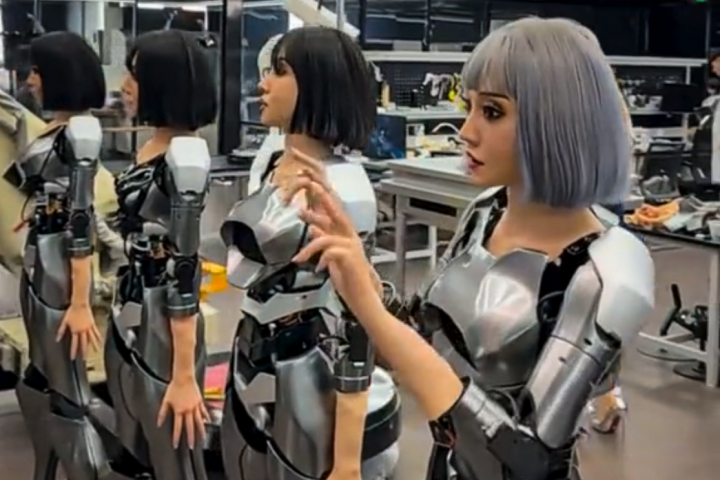Attachable stands or (less affordable) devices like the WeBike make it possible to exercise both body and mind while pedaling on the spot, but those pounding away on a treadmill are pretty much limited to listening to music or zoning out in front of a TV screen to keep their minds occupied. That could change with a new system developed by researchers at Purdue University. Called ReadingMate, the system uses head-tracking technology to keep onscreen text bobbing along in unison with the runner’s eyes.
Instead of simply enlarging the text to make it easier to read or relying on oversized monitors, ReadingMate allows a treadmill user to read normal-size text on a small monitor mounted in front of the machine. The system relies on infrared lights embedded in special goggles that are tracked by an infrared camera positioned in front of the runner. As the user’s head moves vertically, the system moves the text accordingly.
"Our eyes can accommodate vibration to a certain degree," said Ji Soo Yi, an assistant professor of industrial engineering at Purdue. "There are compensatory reflex mechanisms that tend to stabilize the head and eyes to maintain gaze and head position."
So instead of following the user’s head movements exactly, an algorithm takes this into account and moves the text slightly out of sync with the head motion.
To study the system’s efficacy, 15 student participants were asked to count how many times the letter "F" occurred in two lines of text that were situated among ten lines displayed on a computer monitor. The results showed that those using the ReadingMate system achieved a higher level of accuracy than those who didn't.
"We also measured whether participants gave up on counting the letters because the task was too difficult," said Bum chul Kwon, a doctoral candidate who collaborated with Yi on the project. "We often saw people giving up without ReadingMate, especially with certain font sizes and smaller spaces between lines."
In addition to letting treadmill users catch up on some reading while burning some calories, the researchers say ReadingMate could also find aviation, construction and transportation applications. Not to allow drivers and pilots to enjoy a good book while on the job, but to stabilize information displayed on screen while experiencing heavy shaking or turbulence.
The team’s paper appears in Human Factors, the journal of the Human Factors and Ergonomics Society.
Source: Purdue University




